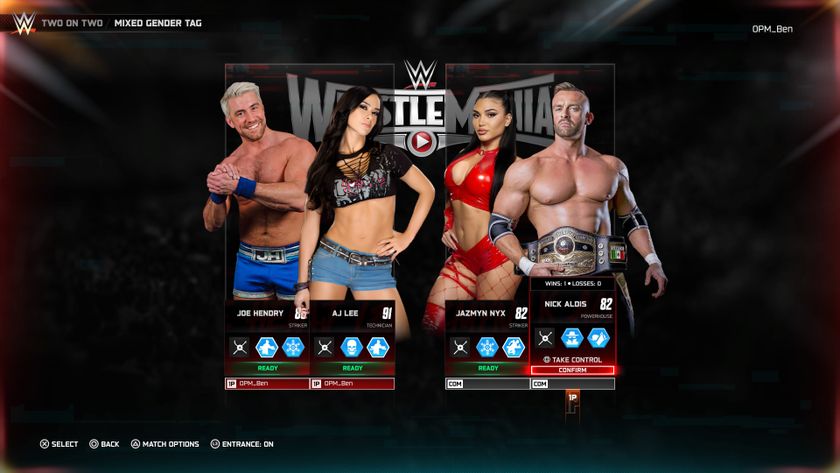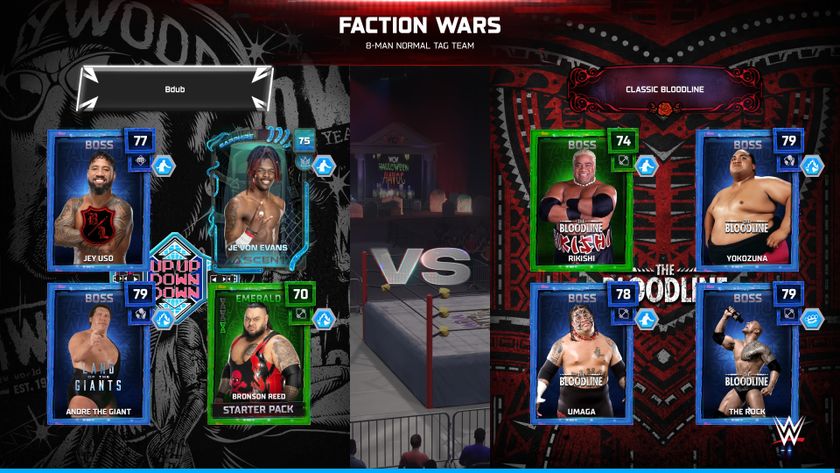The 25 best-selling games of the last generation
Counting down the biggest money makers and trendsetters of the last ten years
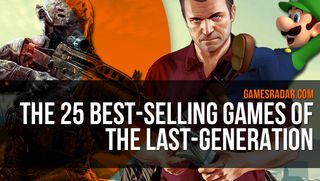
Playing the numbers
It's been a massive decade for interactive entertainment, with the PS3, Xbox 360, PC, Wii, 3DS, and DS delivering games that have shattered records and attracted swaths of new gamers to the fold. And while sales stats aren't the most important indicator of success (let alone 100% reliable), they're a good indicator of what franchises and characters we'll be seeing more of in the years to come.
So which games dominated cash registers in the last generation? We poured through publisher reports, sales trackers, press releases, and record publications to find out the official worldwide sales totals. In the sense of fairness, we also reached back into the DS library for games that overlapped generations, and included a couple PC games that have withstood the test of time. As for mobile apps, well, we'll get to those another time (sorry Angry Birds). It's taken a little bit of legwork to dig up all these real numbers, but here it is: our account of the 25 best-selling games of the last generation.
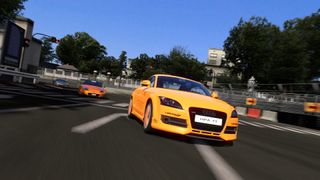
25. Gran Turismo 5 (2010)
How'd they do it?: Gran Turismo 5 is a game that many racing diehards waited years to play. It was teased early for the PS3, promising insane visuals and unprecedented, lifelike physics. But creating all that takes time, and developer Polyphony worked on the title for years, making players wait until 2010 to finally play the full game. After having GT5 built up for so long, some weren't as impressed with the racing sim as they'd expected, but Sony had to be happy with the impressive sales it eventually racked up.
The game got updated numerous times post-launch, dealing with many of the fans' issues with physics and the number of cars in the game. The hard work on the updates obviously paid off, because the game went on to pass the 10 million sales mark that GT3 and GT4 had passed on the PlayStation 2. And if you were to include the sales of Gran Turismo 5: Prologue, the global total would pass 16 million, making this the best-selling GT title ever.
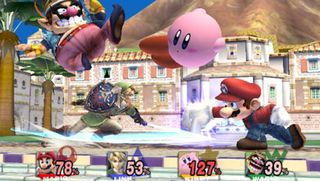
24. Super Smash Brothers Brawl
Total Sales: 11.49M
Howd they do it?: The first game on this list might be the simplest question to answer: take 33 of Nintendos most respected mascots (and two guest characters), pit them against each other in wacky over-the-top battle royales, and see what happens. 35 of the biggest names in video games came together to crush, kill, and destroy one another, and the gaming masses ate it up. Instant success!
What made Super Smash Brothers Brawl so incredible was the digital Nintendo museum it housed within its code. Music, trophies of forgotten franchises and characters, Assist Trophies featuring even more familiar faces, and more are all packed into the teeny little game disc. Brawl is a veritable MUSEUM of knowledge coded into a single experience, and I can think of almost 11.5 million people who wanted to pay the price of admission.

23. Animal Crossing: Wild World
Total Sales: 11.70M
Howd they do it?: Animal Crossing on the Gamecube became its own worst enemy soon after launch. Sure, building up my town and performing menial tasks for animal neighbors sounds great, but without online play (which was becoming more and more popular by the day) and a memory card system for visiting friends in its place, the gameplay quickly became stale.
Enter Wild World and its uncanny ability to connect players around the world with online play, and you have an unstoppable weapon for fans of the previous game. Best of all, it came on the DS, so the idea of carrying a village around in our pockets was too good to pass up. The portable, online-enabled Animal Crossing served as the perfect game to kill some time while traveling or show off to those just buying the DS, and over 11 million people agree with me.
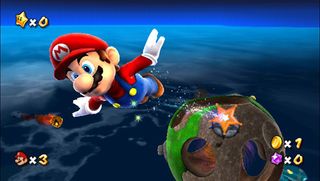
22. Super Mario Galaxy
Total Sales: 11.72M
Howd they do it?: Nintendo took a big risk with Super Mario Galaxy, continuing the 3D platforming action of Super Mario 64 and Sunshine instead of returning to 2D roots (which they eventually did too). By sending the red-capped knight to outer space, Nintendo took the formula for pre-existing 3D platforming adventures and turned it completely upside down with Galaxy...sometimes literally.
With a mascot like Mario, risks can be taken: that mustachioed mug has been entertaining Nintendo fans for countless years, so loyal Mario aficionados were buying this game no matter what. The massive popularity of the Wii meant that Nintendos little system that could was in a ton of living rooms both casual and hardcore, and that kind of install base usually means massive results at the register.
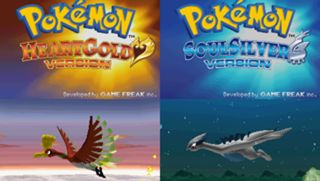
21. Pokemon Heart Gold/Soul Silver
Total Sales: 12.67M
Howd they do it?: We could sum this up in two simple words: Its Pokemon! Nintendo could market a game where all you do is take pictures of Pokemon in funny positions and it would sell gangbusters (oh wait). This particular version had nostalgia in its corner, as they were remakes of two of the most highly regarded games in the entire series by long-time players.
Each game came packaged with a Pokewalker, a small pedometer that allowed trainers to build their in-game Pokemon even without playing the game. A simple transfer process was all a trainer needed to register a Pokemon in the device, and each step powered the creature up until re-transfer. To review: not only was this a remake of classic Pokemon series games, the included Pokewalker encouraged kids to play even when they werent playing. Its a formula for success if weve ever seen one.
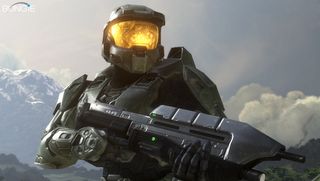
20. Halo 3
Total Sales: 14.5M
Howd they do it?: Were actually shocked that Halo 3 didnt land higher on our list, considering how Master Chiefs head was plastered just about anywhere it could be during the lead-up to release. The shooter masses had invested a lot of time into the previous games, especially with Halo 2s advent of multiplayer, so making the jump to Xbox 360 to finish the fight was a no-brainer.
Back when Halo 3 was coming out, EVERYONE wanted a piece of the action. Some people if Halo would be playable on other platforms like the Wii or PlayStation, only to find out they had to purchase an Xbox 360 to be Master Chief (and some of them did that!). Master Chief, Arbiter, and the rest of the Halo franchise defined the console first-person shooter on the original Xbox, and all of the people who poured hours into the first two games followed the Chief to the 360.
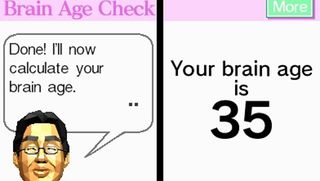
19. Brain Age 2: More Training In Minutes A Day
Total Sales: 14.88M
Howd they do it?: When 19 million people purchase and play the original game in a franchise (more on that in a second), we dont have to rack our brains to figure out why the sequel would share similar success. Brain Age 2 rode the coattails of its predecessor to multi-million unit sales, testing our mettle ever more extensively than before.
Brain Age 2 offered brand new minigames not found in the previous game: Rock, Paper, Scissors, Serial Subtraction, Symbol Match, and more. By changing the format but keeping the challenge Brain Age 2 could not only enhance a players mental acuity, but also keep those players from getting rid of the original game. After all, the two boasted completely different activities, why wouldnt the big Brain Age fans wants to keep both games and switch between the two? Whoever made the decision to completely change the minigames in Brain Age 2 must have enhanced their brains with the original game, because thats genius.
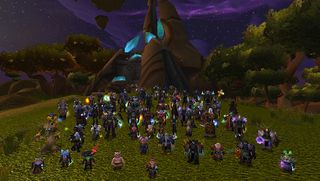
19. World of Warcraft (2004)
How'd they do it? Over 14 million copies of the original World of Warcraft have been sold over its ten-year lifespan, and nearly double that amount for its numerous expansions. That's a significant achievement for a non-console game, as is its ability to hold the MMORPG throne after all these years.
Books can (and probably have) been written about how World of Warcraft has maintained its lead after all these years despite competition from the likes of EVE Online, RuneScape, and the many free to play titles out there. Perhaps it's because WoW remains one of the highest rated MMORPG of its kind, or the many expansions keeping it fresh, or maybe it's the community which meets yearly for things like Brewfest (the largest virtual beef festival to date) and donated $1.9M toward Japan's tsunami recovery efforts in 2011 (the largest community donation of its kind). Either way, it's little wonder World of Warcraft has endured multiple generations and will likely still be kicking around in one form or another the next time we put together a list like this.
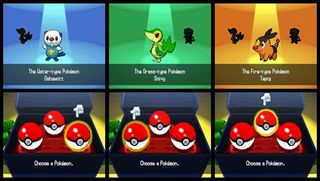
17. Pokemon Black / White (2011)
How'd they do it? As the successor to the hugely popular Pokemon Diamond/Pearl edition, Pokemon Black/White was met with huge anticipation and massive expectations. For the most part it delivered, heralding the fifth generation of Pokemon with 150 new monsters, better graphics and animations, and new features that innovated on the traditional Pokemon experience. (And yes, we count two versions of the same Pokemon game as one for the purpose of this list.)
Moreover, it built upon Diamond and Pearl's multiplayer functionality, using the DS's bottom screen to manage Pokemon trades and stay connected with fellow hunters. The game also granted passage to the Pokemon "Dream World" through Pokemon Global Link website, wherein Poke-hunters had the chance to maintain their own house, nab unique Pokemon, and engage in multiplayer events In short: it was the ultimate Pokemon experience. Until the next version came out, anyways.
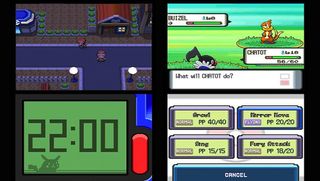
16. Pokemon Diamond / Pearl (2006)
How'd they do it? Selling five million more copies than its predecessor Ruby/Sapphire, and two million more than its sequel, Black/White, Pokemon Diamond/Pearl retains the mantle of the best-selling Pokemon game in the entire series. It broke launch records when it first appeared on Japanese shelves, selling 1.6 million units in its first week and breaking the five million sales mark in little under three months, thereby becoming the fastest DS game to do so in the history of the console.
So why all the buzz? Diamond/Pearl was the first true Pokemon title for the Nintendo DS. As promised, Nintendo made sure it used every perk of the handheld system. New online features allowed players unprecedented levels of multiplayer interaction, such as the ability to trade between the two versions or port monsters from previous Pokemon titles. These new addition, combined with the game's established Pokemon gameplay helped Diamond/Peal drive the fourth generation of the Pokemon series forward in a new and connected way. Judging by its sales, fans were more than happy to hitch a ride.
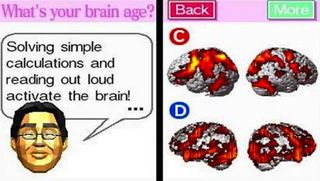
15. Brain Age: Train your Brain in Minutes a Day (2005)
How'd they do it? Nintendo's puzzle game promised to enhance cognitive functions and all-around smarts with every play. Whether that claim wound up being true or not (we're erring on the side of not), consumers of all ages took the bait--especially in Japan, home of the game's celebrity puzzle master, Dr. Ryuta Kawashima, where it was released a year before the rest of math-loving world.
Inspired by the Kawashima's puzzle book, Train Your Brain: 60 Days to a Better Brain, Brain Age challenged players to math, memory, and logic puzzles. Upon completion, gamers were given a score indicating the 'age' of their brain and encouraged to keep trying for a younger score. In addition to making innovative use of the DS's touchscreen, the game ignited a whole new genre of intelligence-testing games, and set the Brain Age brand up nicely for a string of future sequels and spin-offs. It's direct sequel, Brain Age 2: More Training in Minutes a Day would later sell over 14M copies, barely missing a spot in this top 20.

14. The Elder Scrolls V: Skyrim (2011)
How'd they do it? Elder Scrolls followers waited five long years for a sequel to 2006's Oblivion, and in 2011, their divine prayers were answered. The Elder Scrolls V: Skyrim sold 3.6 million copies in its first 48 hours to steal the title for Guinness World Record's Fastest-Selling Open-World RPG, and in 10 days sold almost as many copies as its predecessor, The Elder Scrolls IV: Oblivion, did in its entire lifetime.
The Elder Scrolls V: Skyrim took everything the series was known for, rearranged or dropped everything it was infamous for (i.e. the character class system), and gave Skyrim adventurers a vast new land wrought with wars to fight, dragons to slay, shouts to learn, and knees to meme. Despite well-publicized glitches, Skyrim went on to thrive well past its release date through a number of expansions (Dawnguard, Hearthfire, and Dragonborn) and support from the PC and Mac modding community who continue to improve upon Tamriel to this day... or at least subject it to the terror of My Little Ponies.
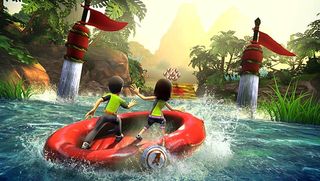
13. Kinect Adventures (2010)
How'd they do it? Like other titles on this list, Kinect Adventures benefited from being bundled with a new piece of gaming equipment; or, in this case, a radically different motion-sensing peripheral for the Xbox 360. Technically speaking, shipping with the Kinect helped it become the best-selling title for Xbox 360, however its arguable Call of Duty: Black Ops comes across the title more honestly having sold 12 million by itself (plus scads of marketing muscle, the Call of Duty namesake, and fan devotion, of course).
Whether you agree with Kinect Adventures' inclusion in this list or not, it's importance in the gaming scene isn't as easily disputed. This was the mascot for Microsoft's Wii-challenging motion camera--one that did away with controllers altogether and promised gamers the chance to be the controller via full-body motion capture technology. It also supported multiple players at once, allowing friends to plug boat cracks in 20,000 Leaks; row in their living rooms to River Rush; or pop pretend bubbles in Space Pop (among other activities). Roll your eyes all you want, because it must have done something right. Microsoft later greenlit a sequel, Kinect Disneyland Adventures... which [spoiler] you won't find on this list.
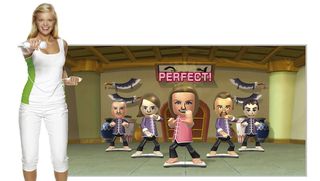
12. Wii Fit Plus (2009)
How'd they do it? Released a year after Wii Fit, Wii Fit Plus rode its predecessor's good name to retail success. The sequel upped the fitness ante with six new yoga and strength training events, 15 new balance and aerobics activities, a new calorie burner counter, multiplayer functionality, and the option to create profiles for kids and pets. Significant enhancements were also added to the game's interface, making Wii Fit Plus a smoother and more easily navigated title, thereby addressing criticisms Nintendo believed to be causing Wii Fit's stagnating sales (that was sarcasm, in case you were wondering).
Sporting easier controls, more activities, and the integration of mind-and-body workouts (aka Stroop activities), Wii Fit Plus improved upon Wii Fit in all the ways that counted. Its success, combined with Wii Fit's original sales, earned the Wii Balance Board the honor of being named Guinness World Records' 'best-selling scale' after selling over 32 million units by November 2010. Who knows how many it's sold since, but adding Wii Fit with Wii Fit Plus would likely give us a decent guess. So let's say... 20 billion? That sounds about right. Or not. What? You already stopped reading? Moving on...

11. Wii Fit (2008)
How'd they do it? In its quest to grab every dollar of the lucrative casual gaming market, Nintendo slapped on a headband, pulled up its yoga pants, and made a mad dash for the fitness crowd. Its strategy: create a game that would replicate popular exercise activities using established Wii peripherals and a brand new device called the Balance Board. As predicted, Wii Fit became an instant hit, not just among gamers who yearned to burn off a few pounds, but for casual consumers who saw Wii Fit as a fun and intuitive way to get in a daily workout without the hassle of leaving their homes.
Wii Fit was so popular it became a fixture in gyms, physiotherapy clinics, and nursing homes across the globe. Granted, it had the unfortunate glitch of calling some kids fat when they really weren't, but hey, we're sure it was coming from a loving place.
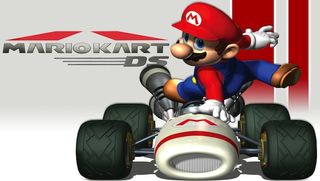
10. Mario Kart DS (2005)
How'd they do it? Mario Kart DS was the first in the beloved franchise to offer online multiplayer. At the time, that was huge. This was the Mario Kart series, after all--the king of mascot racing. So to suddenly give gamers the opportunity to challenge friends and strangers across the world within a series they'd been playing for decades, and to do so untethered from a console? Let's just say DS owners were more than eager to get behind the wheel.
The inclusion of a mission mode on top of traditional Mario Kart racing antics only sweetened the deal for Nintendo fans. It was everything they loved about Mario Kart, but with the added plus of being able to shoot turtle shells at complete strangers. Obviously GamesRadar's team enjoyed Mario Kart DS, naming it our number one title on our list of the best DS games. We're sure that alone must have contributed to at least half of the sales, no?

9. Grand Theft Auto IV (2008)
How'd they do it? Long before Grand Theft Auto V became the largest entertainment release in the world, it was Grand Theft Auto IV who wore the crown (for a short time, at least). It earned $310 million on its first day on shelves, selling 3.6 million copies and--if you believed the media at the time--condemning an entire generation of children to a life of crime and strip clubs. But hey, it came with the largest in-game soundtrack gaming ever saw (340 tracks including DLC, not counting PC mods), so at least kids were driving to Hell in style.
Grand Theft Auto IV took more than 150 developers over four years to create, and it showed. The first GTA game for the PS3 and Xbox 360, it dropped players onto the meticulously detailed streets of Liberty City and introduced them to a memorable cast of characters, including protagonist Nico, an ex-soldier from Eastern Europe in search of revenge and the American Dream. To date, GTA IV is the highest rated games for PS3 and Xbox 360 and--oh wait, we're getting call... No, Roman we don't want to see some titties! Stop calling!
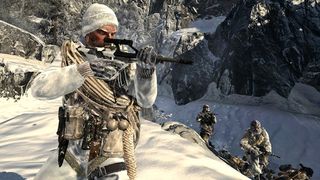
8. Call of Duty: Black Ops (2010)
How'd they do it? As the seventh addition to the unflappably popular Call of Duty series, few were surprised when Activision announced that Call of Duty: Black Ops was on track to becoming the biggest product ever released by mankind shortly after its release. In its first 24 hours on shelves, it sold over 5.6 million copies worldwide, besting the pace set by Call of Duty: Modern Warfare 2 and setting a new world record for largest entertainment launch (which, as you'll see, has a habit of getting topped every year). The game went on to earn $1 billion by December 2010, all but securing the series' development for years (even decades) to come.
So how was it? Pretty good, according to critics who gave it a cumulative review score of 85 on Metacritic and 88% on GameRankings. Lending to its score was its cold war locale (a first for the series), combat tweaks, and a strong multiplayer component. But let's be honest here, it was the zombies that kept pulling people back in.
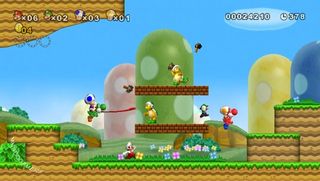
7. New Super Mario Bros. Wii (2009)
How'd they do it? New Super Mario Bros. Wii had a lot going for it when it twirled its way into the Wii catalog. It represented the first traditional Super Mario title on the Nintendo Wii and a return to Mario's retro-platforming style made popular by the Nintendo DS's New Super Mario Bros. Perhaps the largest selling factor, however, was that it was the first title in the Super Mario Bros. series to accommodate up to four players on the screen, infusing the franchise with a new level of multiplayer innovation (or frustration, depending on who you played with).
Combined with Nintendo's super guide feature and a heap of new power-ups, secrets, and moves, New Super Mario Bros. Wii appealed to Mario fans across all generations. Anticipating its popularity, Nintendo gave it unique red packaging and bundled the game with the Wii following its arrival. And this showed that the casual audience that bought the Wii was still interested in "real" games too.

6. Wii Play (2006)
How'd they do it? Like one other Nintendo title on this list, Wii Play had the benefit of being a Wii launch game for gamers in Europe, Australia, and Japan. Released a few months later for North America, the game offered nine motion-controlled party games, some of which had been trotted out as Nintendo Wii tech demos during E3 2006. And more importantly, it came with an extra controller.
Like Wii Sports, Wii Play's success was also owed to its mass-market appeal and the fact it was one of the first Nintendo Wii games available in global markets. It wasn't that great, but it held up as a gateway game for Nintendo fans and curious non-gamers nonetheless. As Wii-mania took hold of the world, people eeded more controllers, and if it came with Wii Play, all the better. A sequel, Wii Play: Motion, was released in 2011 and bundled with a Wii Remote Plus controller, though it didn't see nearly the same success.
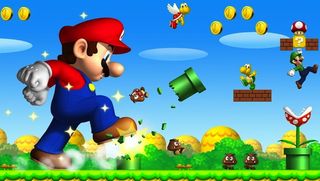
5. New Super Mario Bros. (2006)
How'd they do it? Drawing on its roots certainly helped. As the first Mario-led 2D platformer to grace the franchise since 1992's Super Mario Land 2: 6 Golden Coins, New Super Mario Bros. gifted fans a mushroom-sized dose of Mario nostalgia while also playing to the Nintendo DS's strengths. The game offered a perfect blend of old-school platforming with modern frills such as rich, 2.5D environments, minigames, super-sized power-ups, and an all-round style reminiscent of the plumber's early adventures.
Critics lauded the game for rejuvenating Mario's old school reputation at a time when he was more known for 3D action, party titles, and an endless stream of Nintendo sports games. Its popularity would kickstart a new era of retro-inspired Mario games including the Wii sequel, New Super Mario Bros. Wii; and the Nintendo 3DS sequel, New Super Mario Bros. 2, released in 2012.
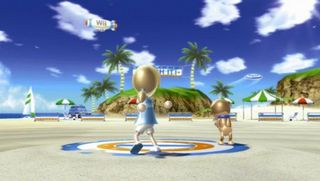
4. Wii Sports Resort (2009)
How'd they do it? As the sequel to ridiculously successful Wii Sports (we'll get to that soon enough), Wii Sports Resort had an eager audience lining up for its arrival in the summer of 2009. Once again, its sales were helped by being bundled with Wii consoles from that point onwards, and the fact it shipped with Nintendo's Wii MotionPlus add-on, a snap-on peripheral that promised a more accurate motion-gaming experience.
The game featured more activities, more control, and more... everything. Each of the 12 events showed off the Wii MotionPlus's strengths in various ways, from adding a greater level of finesse to sword fighting, allowing for a greater range of movements in table tennis, or simply making it easier to land a bullseye in archery. It highlighted the Wii's true potential, and won a well-earned place amongst gamers and non-gamers alike for its efforts. True, Wii Sports Resorts only sold half as many copies as its predecessor, but went on to score higher marks with gaming judges, earning an aggregate review score of 80 and 82% on Metacritic and GameRankings, respectively; compared to Wii Sports's scores of 76 on both.
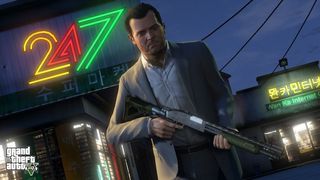
2 (tie). Grand Theft Auto V (2013)
How'd they do it? Having a solid reputation helps. Grand Theft Auto is recognized by Guinness World Records as the best-selling action series of all time, moving over 108 million copies between all entries (15 if you're counting). So by the time GTA V appeared (a whole four years after GTA IV, no less), gamers were more than ready to slap down their hard-earned dollars to jump back into Rockstar's sandbox franchise--so much so that estimates put GTA V preorders in the record-breaking range of nearly 7 million.
The hype for GTA V translated into huge sales for the sequel when it arrived in September 2013. Just three days after its launch, GTA V became the fastest entertainment product to hit the $1B sales mark, clobbering The Avengers film's previous 10-day record. Astronomical numbers notwithstanding, GTA V was also pretty good. Even if you don't believe our five star review (and really, you should), it's currently ranks as the second best reviewed game for both PS3 and Xbox 360 games on Metacritic and GameRankings. Not bad for a series lawyer Jack Thompson once called the the gravest assault upon children in this country since polio. Oh, Jack.
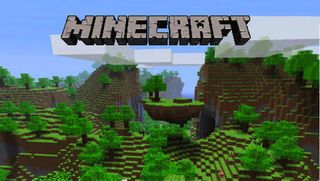
2 (tie). Minecraft (2009 alpha / 2011 official)
How'd they do it? Blood, sweat, and bricks (but mostly bricks). Released in its alpha state by a (then) unknown coder named Markus Persson in May 2009, the indie title found an immediate following amongst its PC crowd who fell in love with its low-res style and deep, build-a-world mechanics. Their support helped Minecraft sales skyrocket, granting Persson the funds and popularity to quit his day job and develop Minecraft full time. Soon after, he founded Mojang Studios alongside partner Jakob Porser and released Minecraft's official we're-done-testing-this-thing-out commercial version in November 2011.
Markus Persson (aka Notch) has since left Mojang in the care of Jens Bergensten to pursue other projects, but that hasn't slowed Minecraft's march to world domination. By late 2013, the original PC version had sold close to 12 million copies, while the combined sales of mobile versions (2011), an Xbox 360 version (2012), and PS3 version (2013), elevated its total franchise sales to 33 million and climbing. With Xbox One and PS4 versions on the horizon, expect that number to to grow even more nuts. In the meantime, see what wonders Minecrafters have already created in our gallery of 50 Stunning Minecraft screenshots.

1. Mario Kart Wii (2008)
How'd they do it? It was a Mario Kart game, for one. More importantly, it was the first Mario Kart entry for the Nintendo Wii which, for those who could remember spending a bulk of their childhood chucking bananas and popping balloons with friends in Mario Kart SNES, was a big deal at the time of its release.
Sporting 32 tracks (half of which paid tribute to past Mario Kart locations), Mario Kart Wii deftly balanced traditional Mario Kart gameplay with modern flourishes like the ability to race competitors around the world via the Mario Kart Channel and Nintendo's Wi-Fi Connection. As an added perk, each Mario Kart Wii came with a Wii Wheel peripheral, which housed the Wii Remote and gave players the feeling of controlling an actual Kart wheel (albeit, a floating wheel with no physical grounding and slippery tilt controls). All these elements made Mario Kart a hit with critics, and boosted sales to the point where Guinness World Records Gamer's Edition declared it the best-selling racing video game of all time in its 2010 edition.
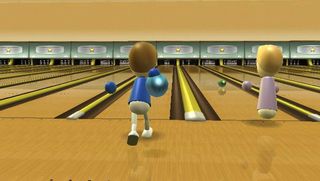
Honorable mention: Wii Sports
How'd they do it? Wii Sports's record-breaking success is owed in no small part to the fact it was bundled with the Wii console in every region but Japan when it launched in 2006. It also helps that it offered the first taste of Nintendo's then-revolutionary motion controlled gaming console and its new Mii online avatar feature, making it a hot commodity for Nintendo fans who had been chomping at the bit for the Wii's arrival.
Born of Nintendo's desire to dominate the casual market, and delivered on the wings of media hype, Wii Sports bridged the gap between traditional gamers and the so-called non-gaming public in a way no title had done before. It presented fun-loving consumers of every age a family-friendly experience that could be picked up and played by anyone with a living room and reasonable mobility. This mass appeal earned it an endorsement amongst critics and a starring role in living rooms, dorms, rec centers, and senior citizen homes across the globe. It's lasting popularity led to a 2009 sequel, Wii Sports Resorts; and a 2013 Wii U remake, Wii Sports Club, featuring HD versions of the five original sports: baseball, bowling, boxing, golf, and tennis.
Because it came bundled in a insanely popular Nintendo console in most countries outside of Japan, we're not counting it as its own game.
Source: Nintendo
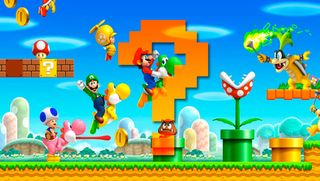
It's not a numbers game...
And if you're looking for more economic fun, check out the 23 little things that annoy us about Steam sales and the 9 ideas that could save Nintendo.
12DOVE was first founded in 1999, and since then has been dedicated to delivering video game-related news, reviews, previews, features, and more. Since late 2014, the website has been the online home of Total Film, SFX, Edge, and PLAY magazines, with comics site Newsarama joining the fold in 2020. Our aim as the global GamesRadar Staff team is to take you closer to the games, movies, TV shows, and comics that you love. We want to upgrade your downtime, and help you make the most of your time, money, and skills. We always aim to entertain, inform, and inspire through our mix of content - which includes news, reviews, features, tips, buying guides, and videos.
